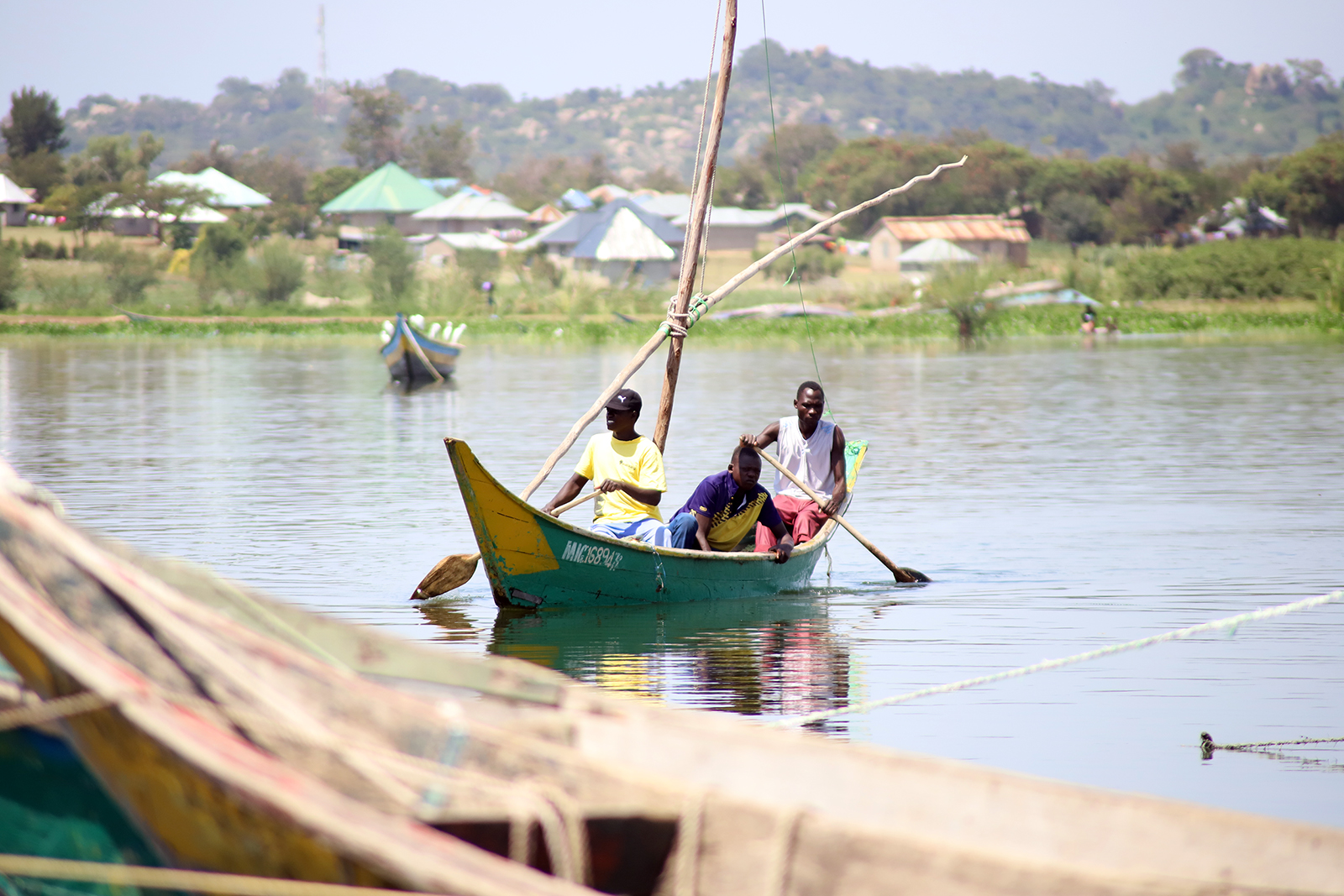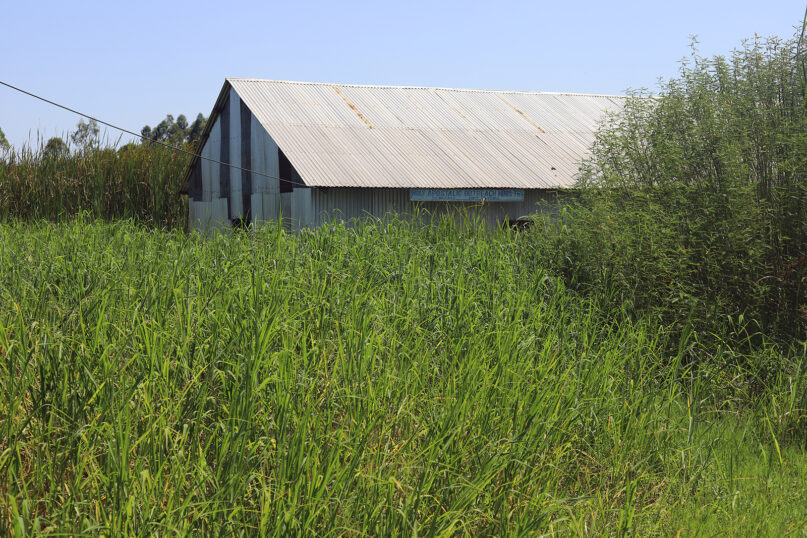
BUDALANG’I, Kenya (RNS) — Every Sunday morning, Pastor Pascal Ogutu walks barefoot across the cracked mud of what was once the foundation of his church. He passes submerged gravestones and the sagging roof of the altar, now half-buried in water and overgrown reeds.
“This used to be holy ground,” he said softly, gazing across the shimmering expanse where Lake Victoria has swallowed not only farmland and homes but faith sanctuaries, like his Free Pentecostal Fellowship in Kenya.
In the flood-prone plains of Budalang’i in western Kenya, dozens of churches — some more than 50 years old — have been submerged or structurally weakened due to rising water levels and unpredictable rainfall. Scientists attribute the changes to climate shifts that are intensifying across the Lake Victoria basin, one of Africa’s most populous and ecologically fragile regions.
“The water does not just take land,” said Ogutu, of the Free Pentecostal Fellowship in Kenya, whose tin-roofed sanctuary collapsed last November after months of flooding. “It takes our memory. It takes our worship. It takes the place we felt closest to God.”
Budalang’i, a rural constituency in Busia County near the Uganda border, sits along a natural floodplain where the lake’s waters spill out during seasonal rains. But residents say the floods have become more frequent, intense and destructive. In the past five years, the lake’s water levels have risen by more than 2 meters, or just over 2 yards, according to Kenya’s Water Resources Authority. This backflow, combined with erratic rainfall and clogged drainage from nearby rivers, has displaced thousands of families and inundated schools, churches and cemeteries.
Scientists say the region’s flooding crisis is a visible symptom of broader climate disruptions, some of which are caused by global warming.

A partially submerged church building in Budalang’i, Kenya, along Lake Victoria. (Photo by Tonny Onyulo)
“Lake Victoria is a giant climate mirror,” said Godfrey Khamala, a climate specialist who leads the flood victims committee in Maumau Village, Budalang’i. “What’s happening here is a direct result of regional warming, changing rainfall patterns and human-driven land degradation.”
Deforestation in upstream areas, coupled with poor urban planning and unregulated development, has worsened sedimentation and reduced the land’s ability to absorb rainwater, he said. At the same time, climate change has intensified the Indian Ocean Dipole, a weather pattern that brings extreme rainfall to East Africa.
“These churches are casualties of a system under stress,” Khamala said. “But their loss also reveals how deeply intertwined environment and community life are.”
As a result, faith leaders are speaking out about climate justice. In April, a coalition of churches in Busia organized an interdenominational prayer walk calling for action to protect the lake and relocate vulnerable communities.
“We are stewards of creation, not just victims of it,” said Pastor Moses Okello of Assemblies of Pentecostal Churches in western Kenya. “We cannot preach hope while ignoring the rising waters around our feet.”
The Church of Christ, a concrete structure with wooden pews and stained-glass windows in Budalang’i, now sits half-sunken in marshland. Its bell tower is partly still visible from a distance.

Women in Budalang’i, Kenya, who have been displaced by unpredictable water levels in Lake Victoria. (Photo by Tonny Onyulo)
“We had baptisms here. We buried our elders here. This was our sanctuary,” said Mary Anyango, 58, a longtime congregant who now worships with her neighbors under a mango tree. “Now, it feels like God is further away.”
Like Anyango, across the region, churches and congregants are adapting in creative and resilient ways. Services have been held in classrooms, tents, market stalls and even boats. Pastors have converted living rooms into altars, where worshippers sit on mats or plastic chairs as chickens cluck in the background.
One Sunday in June, more than 80 people gathered under a thatched shelter in Bunyala village, also in Busia County, to pray and sing.
“This is what church means now — people, not buildings,” said Pastor John Musumba, who leads a Pentecostal community that lost its church to flooding in 2022. “The gospel doesn’t need walls. It needs hearts.”
Still, religious leaders say attendance has dropped. Some elderly members have stopped coming to church entirely, fearing the floods or unable to walk through the mud. Tithes have declined, and efforts to rebuild are stalled by poverty and uncertainty, they said.

Pastor John Musumba in Kenya near Lake Victoria. (Photo by Tonny Onyulo)
For many congregations, efforts to rebuild have been slow or symbolic. Some have erected temporary churches on higher ground with salvaged wood and tarpaulin. Others are fundraising to purchase plots farther away from the flood zone, but many cannot afford to do so.
“We are competing with families who need land for shelter,” said catechist Vincent Okumu, who coordinates emergency aid for displaced families with a local ecumenical relief committee. “Everyone is trying to move uphill. There is not enough space.”
But faith remains a source of strength and solidarity. Congregants said the loss of physical buildings has not shaken their belief in divine presence, but in some cases has deepened it.
“In this crisis, we have learned that God is not confined to concrete,” said Patrick Okumu, a lay local preacher who now holds weekly Bible studies under a baobab tree. “He is with us in the mud, in the storm, in the rebuilding.”
Still, many hope the outside world will take action.
“This is not just about Kenya,” Khamala said. “This is about how climate change is eroding not only coastlines and crops, but culture, heritage and spiritual life. These churches are the canaries in the coal mine.”
Back at the waterlogged remains of Free Pentecostal Fellowship in Kenya on a recent Sunday, Ogutu led his congregation in a song of lamentation.
“Lord, do not pass us by, even when the waters rise,” they sang in Luhya, as children clapped along and elders wiped away tears.
